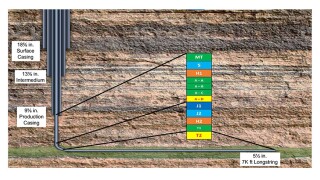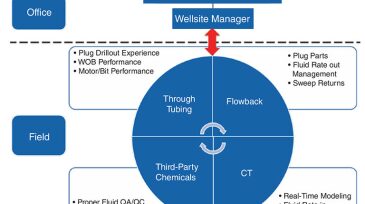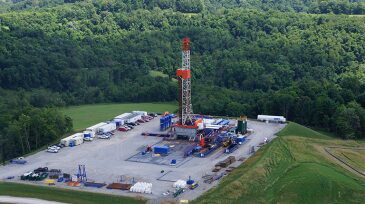Directional/complex wells
Extended-reach drilling (ERD) and complex wells have emerged as pivotal techniques, enabling access to previously unreachable reserves. ERD allows operators to access oil and gas reservoirs far from the drilling site, minimizing the environmental footprint and optimizing resource recovery.
This paper highlights nontraditional methods to cure oil-based-mud losses in horizontal wells drilled in unconventional plays.
The authors of this paper write that the use of high-angle wells through anisotropic shale formations represents a promising approach to improving oil recovery while reducing the overall number of wells required.
-
This paper presents a factory-model approach to improving CT drillout performance that has been used successfully for more than 3 years and has become standard practice.
-
Against the background of a low-oil-price environment, a redevelopment project was launched to give a second life to a shallow, depleted, mature offshore Congo oil field with viscous oil (22 °API) in a cost‑effective manner.
-
This paper presents the data collected by an ultrasound downhole scanner, demonstrating a novel method for diagnosing multilateral wells.
-
This paper describes challenges faced in a company’s first deepwater asset in Malaysia and the methods used to overcome these issues in the planning stage.
-
The oil industry is currently undergoing a technological transformation that will add value, improve processes, and reduce cost. Future drilling engineers will have knowledge of robotics, automation, and organizational efficiency, which is highly appealing for recruitment.
-
With drilling on the rise, US oil production is expected to continue to increase. However, many industry professionals are concerned that the “brute force” model, which has seen a massive influx of capital flow into completion and hydraulic fracturing operations, is not economically sustainable.
-
This paper demonstrates a work flow to determine optimal lateral lengths and trajectories in the Midland Basin by studying the effect of the lateral length and trajectory on well production.
-
This paper describes a new approach to evaluating the effectiveness of the rotary-steerable-system (RSS) steering mechanism on wellbore tortuosity in horizontal wells.
-
With the arrival and development of rotary steerable systems in the late 1990s, the industry thought that drilling a perfectly smooth and controlled trajectory would not be an issue. Two decades later, we’re still talking about wellbore quality, especially with long and complex horizontal wells.
-
Range Resources' drilling head talks about how the company went from drilling the shortest laterals in the Marcellus to the longest and why.













